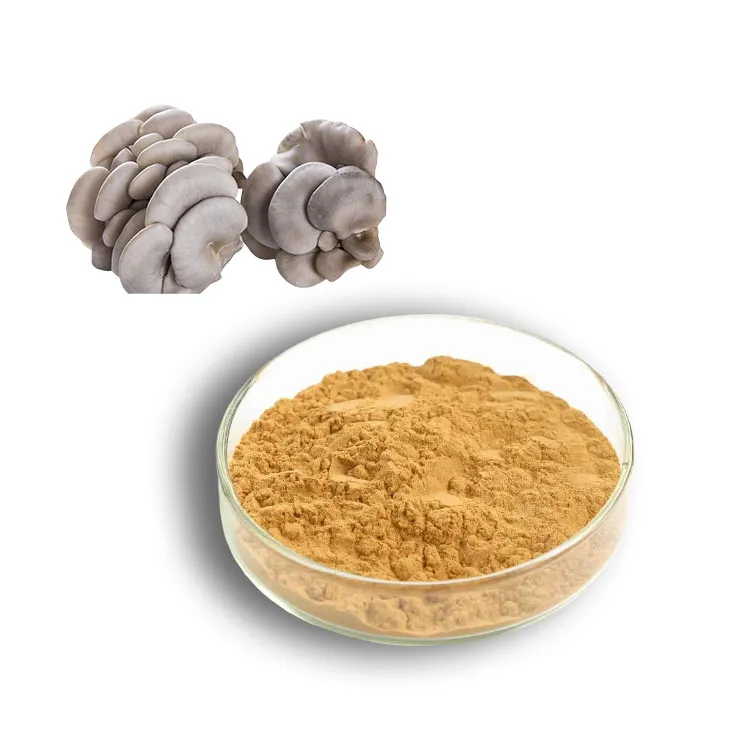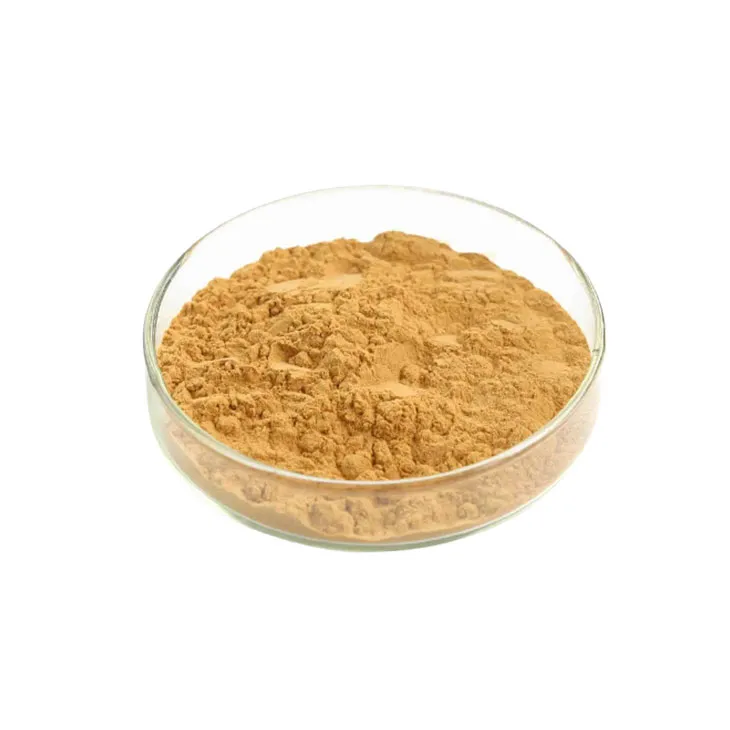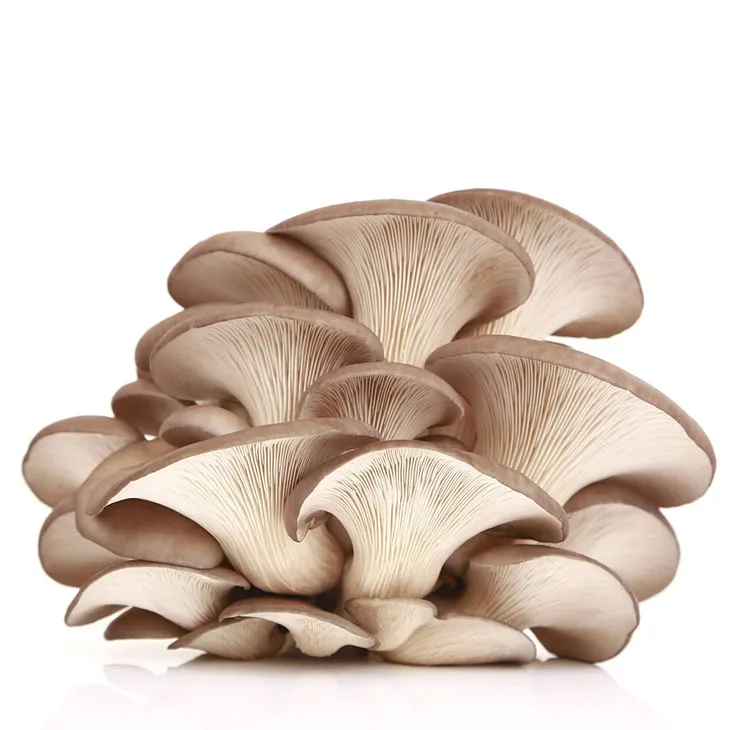- 0086-571-85302990
- sales@greenskybio.com
Extraction process of oyster mushroom extract powder.
2024-11-30

1. Introduction
Oyster mushrooms are not only delicious but also rich in various beneficial substances such as polysaccharides, proteins, and other bioactive components. Oyster Mushroom Extract Powder has a wide range of applications in the fields of food, medicine, and health products. The extraction process of Oyster Mushroom Extract Powder is a complex yet systematic procedure, which will be elaborated in detail in this article.

2. Collection of Fresh Oyster Mushrooms
2.1 Quality Selection
The first step in obtaining Oyster Mushroom Extract Powder is the collection of fresh oyster mushrooms. The quality of the mushrooms is of utmost importance. Only prime - quality oyster mushrooms should be selected. These mushrooms should be free from obvious diseases, pests, and mechanical damages. The cap of the oyster mushroom should be well - developed, with a smooth surface and a normal color. The stipe should be firm and not overly long or short.
2.2 Harvesting TimeThe harvesting time also affects the quality of the mushrooms. Generally, oyster mushrooms should be harvested at the right maturity. If they are harvested too early, the content of active substances may not be fully developed; if they are harvested too late, the mushrooms may start to decay or lose some of their beneficial components. Usually, when the oyster mushrooms reach a certain size and the edges of the cap start to flatten slightly, it is a suitable time for harvesting.

3. Cleaning Process
Once the fresh oyster mushrooms are collected, they need to go through a cleaning process to eliminate any external contaminants. 3.1 Initial Removal of Debris
First, any large debris such as soil particles, fallen leaves, or small twigs attached to the mushrooms should be removed manually. This can be done by gently brushing or picking off the visible debris.
3.2 WashingAfter the initial removal of debris, the oyster mushrooms are washed. They can be washed in clean water. Gentle agitation can be applied to ensure that all the dirt and contaminants on the surface are removed. However, care should be taken not to damage the mushrooms during the washing process. It is important to note that the washing water should be of good quality, preferably filtered or purified water, to avoid introducing new contaminants.

4. Drying
After cleaning, drying follows, and different drying techniques can be employed based on the requirements. 4.1 Air Drying
Air drying is a traditional and simple drying method. The cleaned oyster mushrooms are spread out in a well - ventilated area. The air circulation helps to remove the moisture from the mushrooms gradually. However, this method is relatively slow and may be affected by environmental factors such as humidity and temperature. If the air humidity is high, the drying process may be prolonged, and there is a risk of mold growth during the drying process.
4.2 Heat DryingHeat drying involves using heat sources such as ovens or drying chambers. The mushrooms are placed in a heated environment, and the heat causes the moisture in the mushrooms to evaporate. This method is relatively fast compared to air drying. However, high - temperature drying may cause some loss of bioactive compounds in the oyster mushrooms. Therefore, the drying temperature needs to be carefully controlled to balance the drying speed and the preservation of beneficial substances.
4.3 Freeze - dryingFreeze - drying is a more advanced drying technique for better preservation of bioactive compounds. In this process, the oyster mushrooms are first frozen. Then, under a vacuum environment, the ice in the mushrooms directly sublimates into water vapor without going through the liquid phase. This method can minimize the damage to the structure and bioactive components of the mushrooms. Although freeze - drying equipment is relatively expensive, the resulting dried oyster mushrooms have high quality and are very suitable for the extraction of valuable substances.

5. Pulverization
After becoming dry, the mushrooms are pulverized. 5.1 Grinding Equipment Selection
The choice of grinding equipment depends on the scale of production and the required fineness of the powder. For small - scale production, a simple grinder such as a coffee grinder can be used. However, for large - scale production, industrial - grade pulverizers are required. These pulverizers can ensure a more uniform and fine grinding of the dried oyster mushrooms.
5.2 Grinding ProcessThe dried oyster mushrooms are placed into the grinding equipment. During the grinding process, the speed and time of grinding need to be adjusted according to the characteristics of the mushrooms and the desired powder fineness. If the grinding speed is too fast or the time is too long, it may cause overheating, which may affect the quality of the powder. On the other hand, if the grinding is not sufficient, the powder may not be fine enough for subsequent extraction processes.
6. Extraction
For extraction, suitable solvents are introduced. 6.1 Solvent Selection
- Water is a commonly used solvent. It is safe, non - toxic, and can effectively extract some water - soluble substances such as polysaccharides from oyster mushrooms.
- Organic solvents such as ethanol can also be used. Ethanol is good at extracting lipophilic substances and some bioactive components that are not easily soluble in water. However, when using organic solvents, strict safety measures need to be taken due to their flammability and potential toxicity.
- A combination of solvents can also be considered. For example, a mixture of water and ethanol can be used to extract a wider range of substances from oyster mushrooms.
The extraction may be carried out under specific temperature and pressure conditions to ensure the efficient extraction of desired substances like polysaccharides, proteins and other bioactive components. For example, when using water as a solvent, a higher temperature may increase the solubility of polysaccharides, but if the temperature is too high, it may cause the degradation of some bioactive components. Similarly, pressure can also affect the extraction efficiency. Appropriate pressure can help the solvent better penetrate into the powder particles and extract the substances inside.
7. Purification
After extraction, purification steps are essential to get pure oyster mushroom extract powder. 7.1 Filtration
The first step in purification is often filtration. The extract obtained after extraction contains not only the desired substances but also some insoluble impurities such as cell debris. Filtration can be carried out using filter papers, filter membranes or filtration equipment. By filtration, the large - sized insoluble impurities can be removed, and a relatively clear extract can be obtained.
7.2 CentrifugationCentrifugation is another important purification method. The extract is placed in a centrifuge tube and spun at a high speed. Under the action of centrifugal force, the heavier impurities will be sedimented at the bottom of the tube, and the supernatant containing the target substances can be separated. This method can further remove small - sized insoluble impurities and some large - molecular - weight substances that are not the target components.
7.3 Chromatographic PurificationChromatographic purification is a more advanced purification technique. Different chromatographic methods such as column chromatography, high - performance liquid chromatography (HPLC) can be used depending on the nature of the substances to be purified. These methods can separate the target substances from other impurities based on the differences in their physical and chemical properties such as molecular weight, polarity, and charge. Through chromatographic purification, a high - purity oyster mushroom extract powder can be obtained.
8. Conclusion
The extraction process of oyster mushroom extract powder involves multiple steps from the collection of fresh mushrooms to purification. Each step is crucial for obtaining high - quality extract powder rich in bioactive components. With the continuous development of technology, more efficient and environmentally friendly extraction and purification methods are expected to be developed in the future, which will further promote the application of oyster mushroom extract powder in various fields.
FAQ:
What are the main factors to consider when collecting fresh oyster mushrooms for extract powder production?
The main factors include the quality of the mushrooms. They should be prime - quality mushrooms, free from diseases, pests, and physical damage. Also, the stage of growth can be important as mushrooms at the appropriate maturity level may contain higher levels of desired compounds for extraction.
Why is freeze - drying preferred in the drying process of oyster mushrooms for extract powder?
Freeze - drying is preferred because it helps in better preservation of bioactive compounds present in the oyster mushrooms. Conventional drying methods may cause some degradation of these compounds due to heat or other factors, while freeze - drying reduces such risks and helps retain the integrity of the substances to be extracted.
What types of solvents are suitable for the extraction of oyster mushroom extract powder?
Commonly used solvents for extraction can include water, ethanol, or a combination of both. Water is often a good solvent for extracting polysaccharides, while ethanol can be effective for extracting certain proteins and other lipophilic bioactive components. The choice depends on the specific target compounds for extraction.
What are the typical purification steps involved in obtaining pure oyster mushroom extract powder?
The purification steps may include filtration to remove solid impurities, centrifugation to separate different phases if necessary, and chromatography techniques such as ion - exchange chromatography or size - exclusion chromatography. These steps help to isolate and purify the desired bioactive components from the initial extract.
How do temperature and pressure conditions affect the extraction process of oyster mushroom extract powder?
Optimal temperature and pressure conditions can enhance the extraction efficiency. For example, higher temperatures may increase the solubility of certain compounds, but if too high, it may also cause degradation. Appropriate pressure can also help in better penetration of the solvent into the mushroom matrix, facilitating the release of target substances such as polysaccharides and proteins.
Related literature
- Extraction and Characterization of Bioactive Compounds from Oyster Mushrooms"
- "Optimization of Oyster Mushroom Extract Production: A Review"
- "Bioactive Substances in Oyster Mushroom Extracts: Properties and Potential Applications"
- ▶ Hesperidin
- ▶ Citrus Bioflavonoids
- ▶ Plant Extract
- ▶ lycopene
- ▶ Diosmin
- ▶ Grape seed extract
- ▶ Sea buckthorn Juice Powder
- ▶ Fruit Juice Powder
- ▶ Hops Extract
- ▶ Artichoke Extract
- ▶ Mushroom extract
- ▶ Astaxanthin
- ▶ Green Tea Extract
- ▶ Curcumin
- ▶ Horse Chestnut Extract
- ▶ Other Product
- ▶ Boswellia Serrata Extract
- ▶ Resveratrol
- ▶ Marigold Extract
- ▶ Grape Leaf Extract
- ▶ New Product
- ▶ Aminolevulinic acid
- ▶ Cranberry Extract
- ▶ Red Yeast Rice
- ▶ Red Wine Extract
-
Grape Leaf Extract
2024-11-30
-
Rose Hip Extract
2024-11-30
-
Scutellaria Extract
2024-11-30
-
Dandelion Leaf Extract
2024-11-30
-
Plantain extract
2024-11-30
-
Jujube Extract
2024-11-30
-
Almond Extract Powder
2024-11-30
-
Cassia Seed Extract
2024-11-30
-
Resveratrol extract
2024-11-30
-
Diosmin
2024-11-30





















